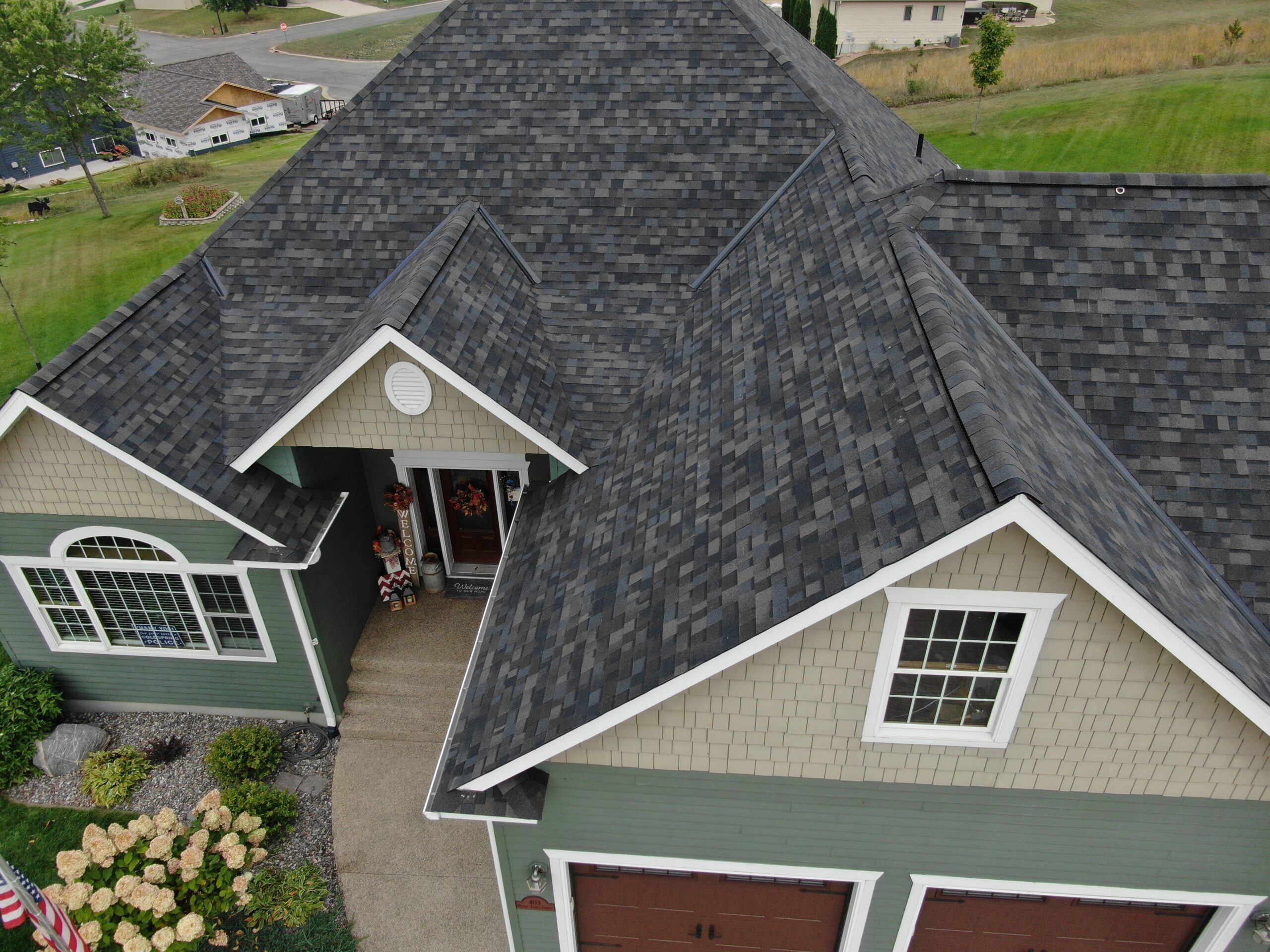Hail damage can impact any part of your property’s exterior, but it most commonly affects the roof, which takes the brunt of any storm. The effects of hail damage may not be immediately visible, but even minor blemishes progress if the damaged areas are not addressed.
What does hailstone damage actually look like
Common signs of hail damage to asphalt shingles include dents, fractures, and granule loss, which may be noticeable right away to the trained eye. If these issues are not resolved, they can lead to weakened shingles, potential leaks, and ultimately, structural problems.
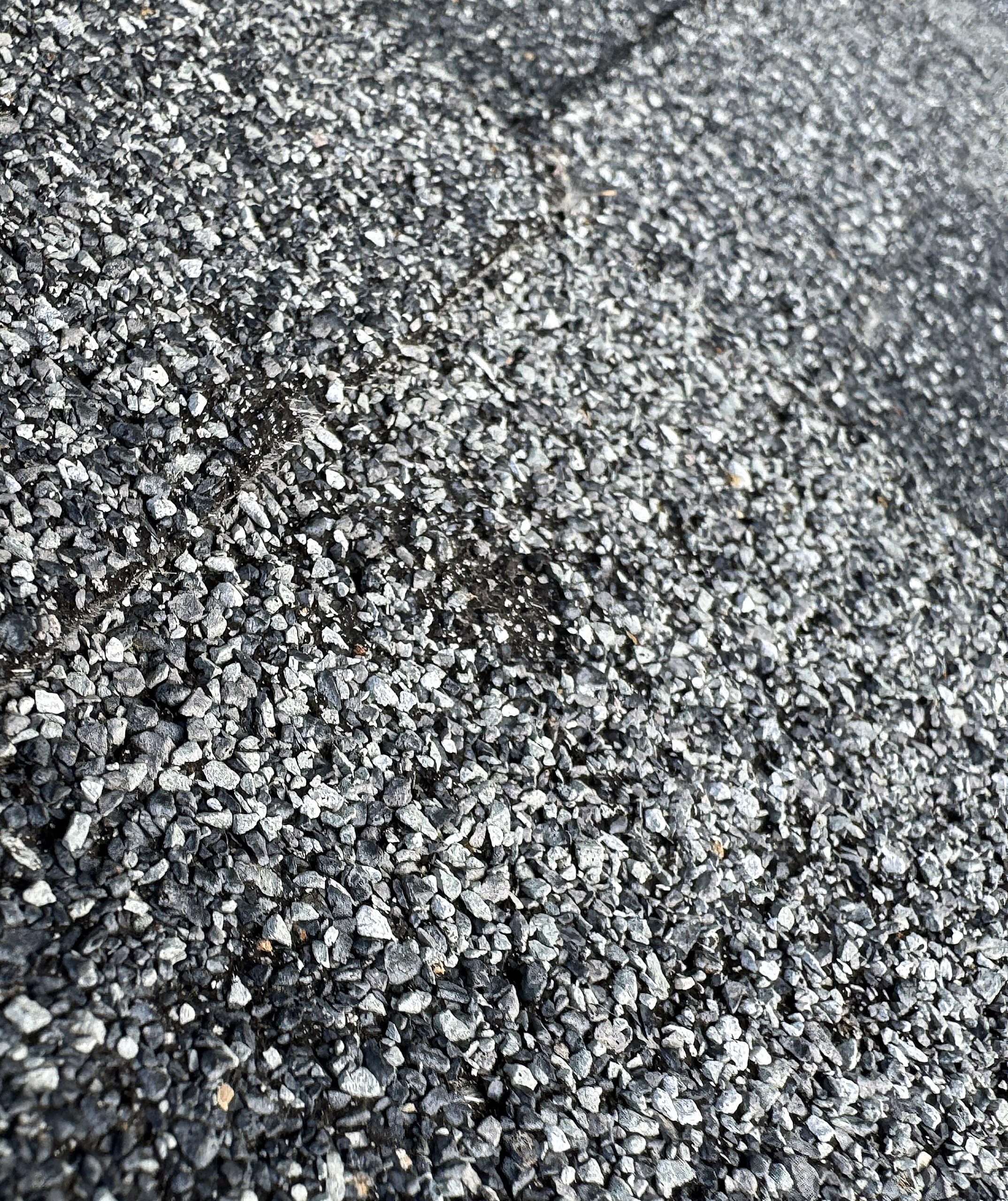
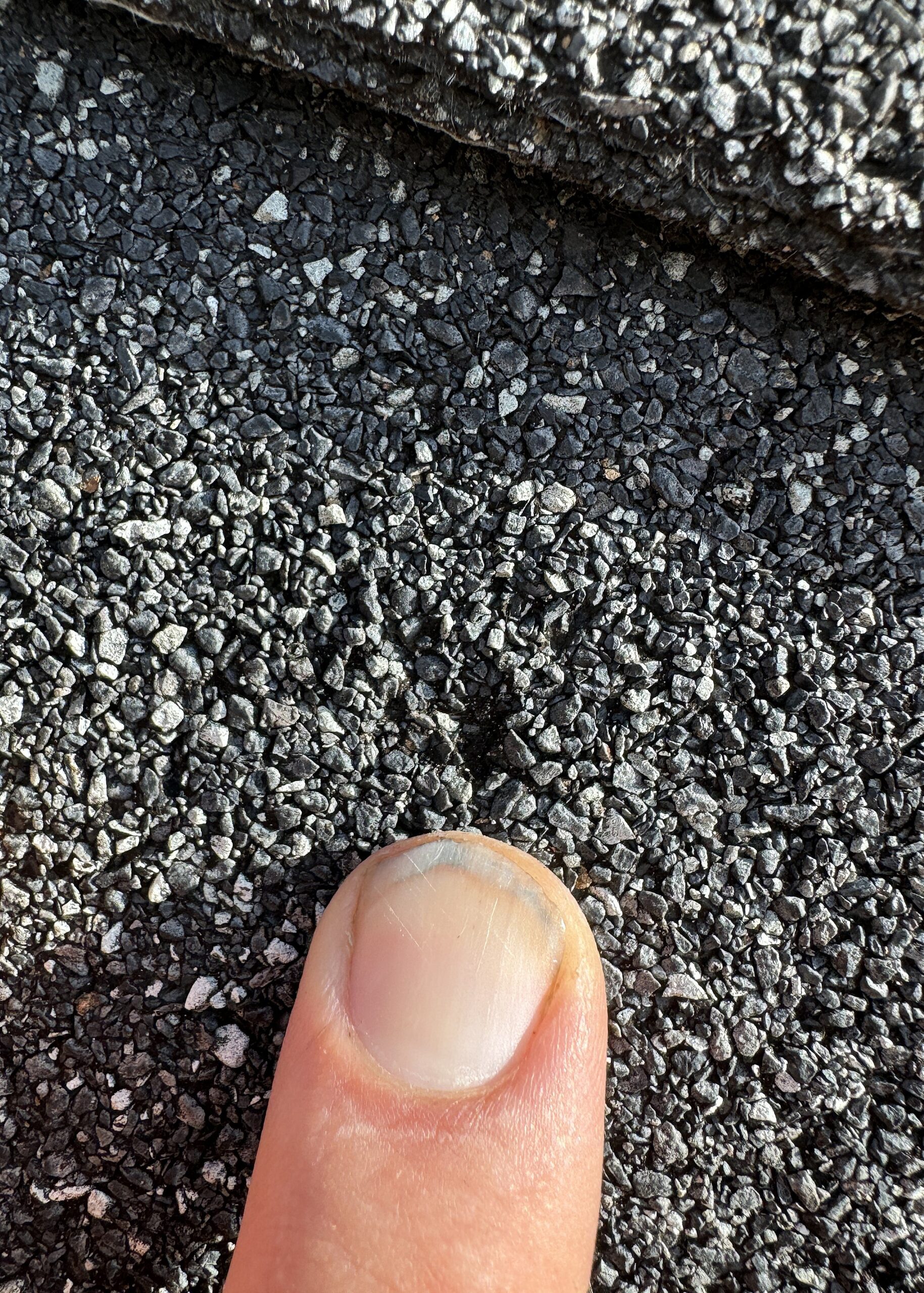
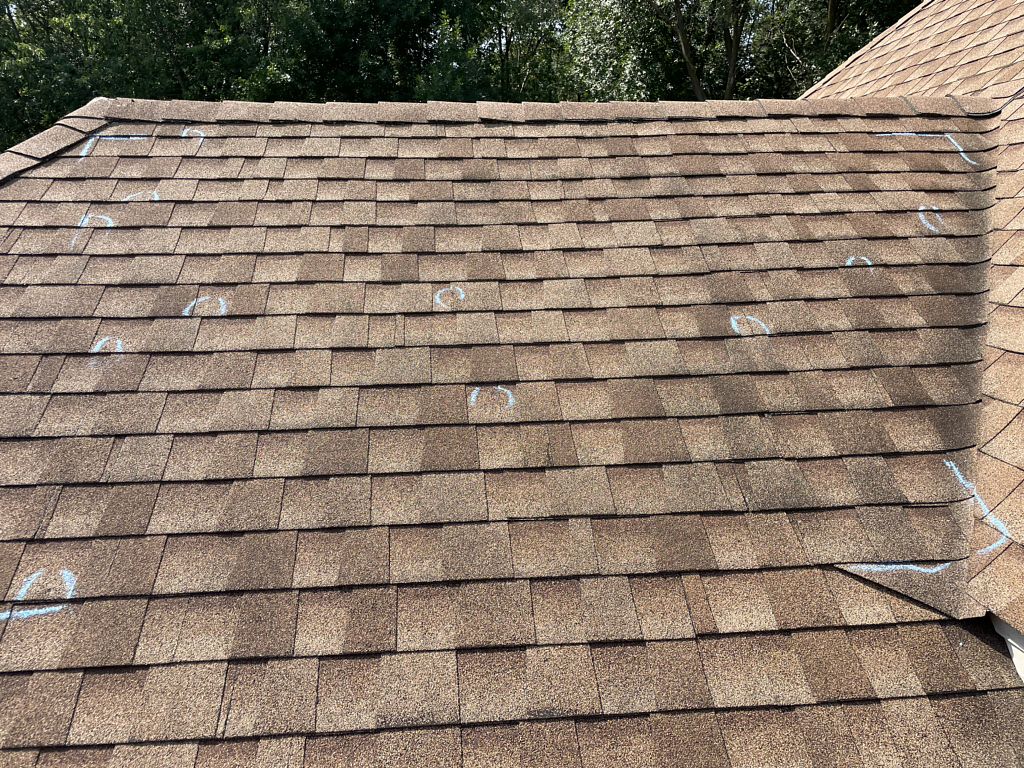
If you’re able to make your way up to your roof safely, you may observe discoloration, dents, bruises, fractures, or granule loss in your shingles. Asphalt shingles are coated with granules that protect the underlying asphalt layer. Hail can dislodge these granules, exposing the asphalt to the elements. After a rain, you might even notice granule buildup in your gutters, which indicates extensive damage to the shingles.
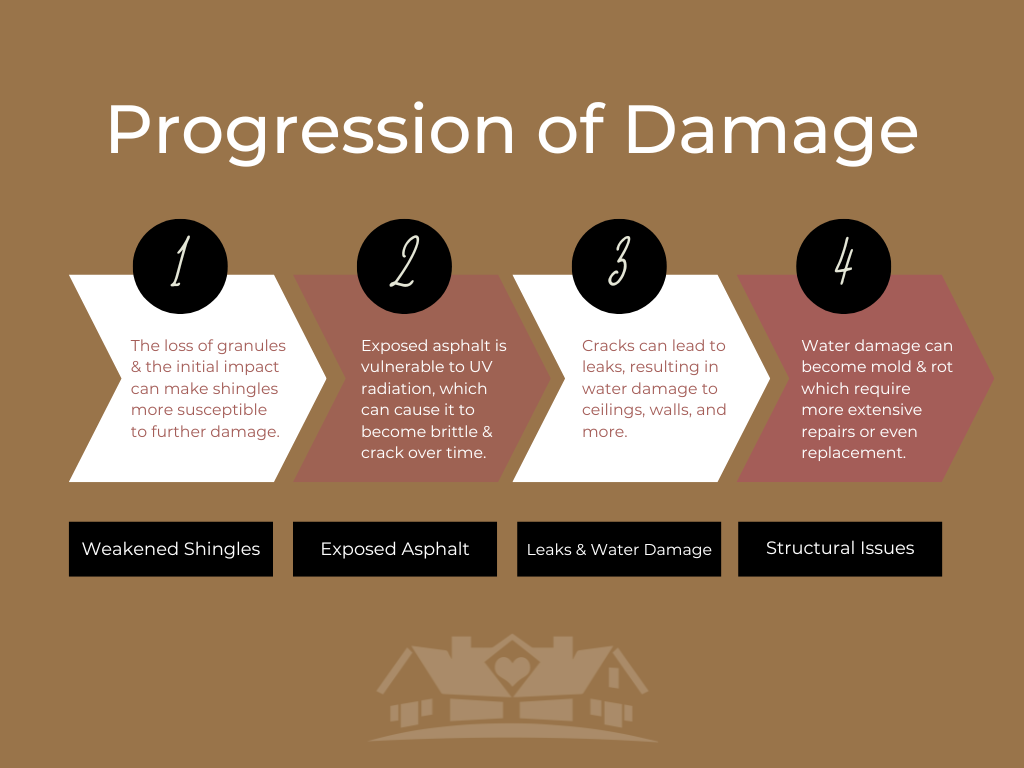
Important factors when assessing possible damage
- Age of your roof
- Climate, maintenance, and the type of roof can significantly impact its lifespan.
- Size and velocity of hail
- Hailstones can cause varying degrees of damage depending on their size and the status of older/weaker roofing materials.
- Type of roofing material
- No matter your roofing system (asphalt, cedar shake, metal, flat, composite), storm damage can become a concern. Roofing updates are common to fix storm damage, but are also necessary for flashing repairs, ventilation, and aesthetic improvements.
- No matter your roofing system (asphalt, cedar shake, metal, flat, composite), storm damage can become a concern. Roofing updates are common to fix storm damage, but are also necessary for flashing repairs, ventilation, and aesthetic improvements.
We’re here for you! Contact Close to Home Construction for an exterior consultation & quote.

